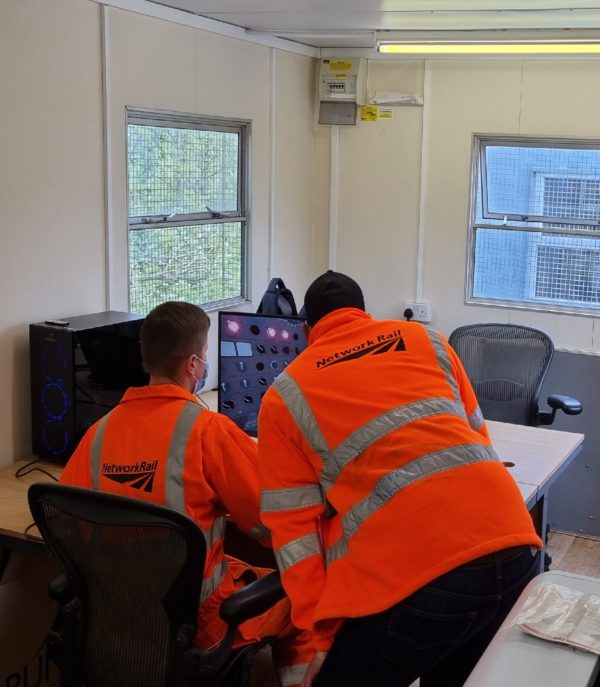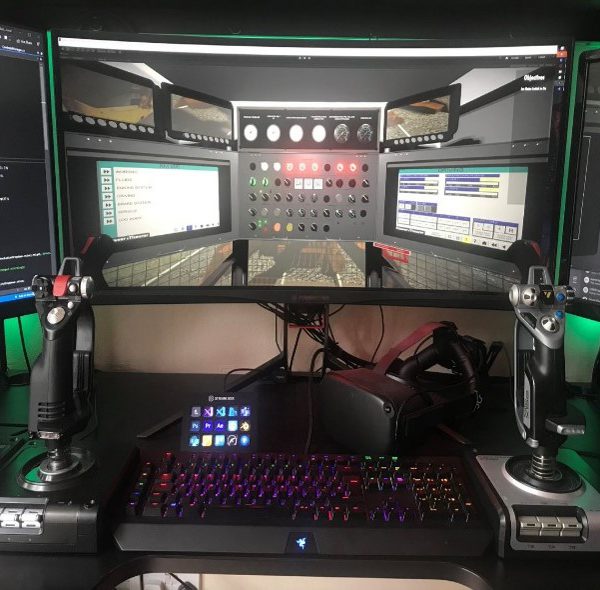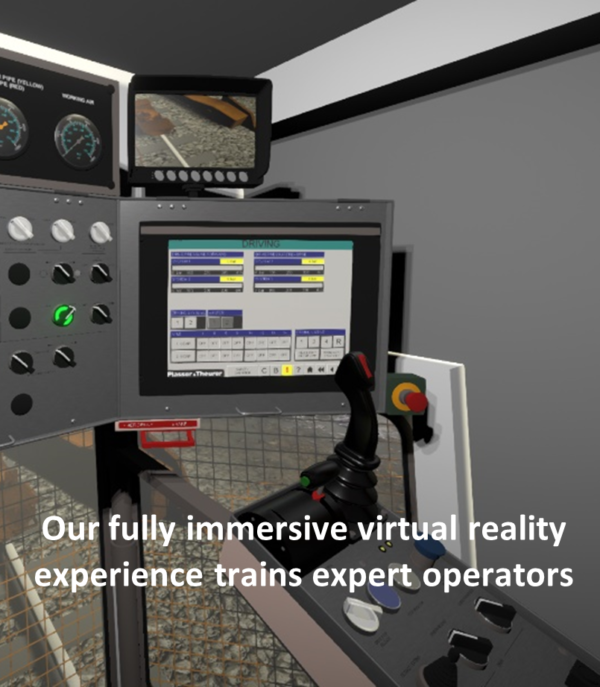


Network Rail’s fleet of RM900 Ballast Cleaners are helping them to increase the sustainability of the UK’s railways.
The existing operator training regime relied on manuals, mentors, and hands-on use of the actual ballast cleaners. But the high operational demand for these large and complex items of heavy plant was severely constraining new operator training. Training opportunities, and locations were governed by plant availability, with the ever-present risk of accidental damage. This severely limited the extent to which trainees could fully familiarise themselves with the ballast cleaners.
In addition to limited plant availability, the training relied on complex user and training manuals, supported by mentors, who each had their own slightly different ways of working. The constant need to cross reference between the paper copies and the equipment, along with non-standard mentor guidance introduced the risk of confusion and error.
Network Rail wanted greater flexibility in terms of training availability, duration, locations, and trainee engagement. That’s why, in June 2020, they turned to D2 Digital Technology for a cost-effective solution.
The successful solution needed to offer a full end-to-end training process, including:
This was the first project that we completed entirely remotely, due to COVID 19 restrictions. We created collaborative online workspaces, and regular web meetings with Network Rail helped us successfully maintain the agreed programme.
The existing user and training manuals were not always easy to follow, and the ballast cleaners themselves are very complex items of plant. Our team had a steep learning curve but collaborated with experienced Network Rail operators to gain the necessary level of technical understanding, so our solution achieved the desired authenticity and accuracy. This approach also helped us to define which reference material and processes were required to address the slightly different cabin and control layouts of the multiple models of ballast cleaner that Network Rail currently operated.
With much of the existing training delivered verbally by a mentor, differing terminologies had developed, which did not necessarily reflect that used in the manuals. A series of clarifying conversations helped us to standardise terminology and agree a correct step-by-step procedure that everyone was happy to implement.
The solution would involve the use of some quite complex additional peripherals such as control joysticks, pedals, and a virtual reality headset. These needed to be setup and prepared in a way that would enable the end user to operate the training system easily, without the need for additional technical training. Our decision-making process focussed on ease of use for the operator as it was important that the person using the project should be focused as much as possible on learning to operate the ballast cleaner, rather than wasting too much time learning to work the simulator controls.
Our digital training program takes the user through the entire ballast cleaner start-up process, and accurately simulates every step of operation.
The interactive 3D virtual environment that we created faithfully represents each of the ballast cleaner’s buttons, screens and switches. The twin joysticks and foot pedal controls are similar to those found in the operator’s cabin, creating a sense of familiarity for the user before they’ve even set foot inside a ballast cleaner.
The interface was designed to be as simple and intuitive as possible, and the peripherals were chosen for their ease of use and reliability. For example, all the peripherals are hard-wired to prevent any accidental external connection issues, or interference.
Recognising the potential need for remote training, we developed two modes for complete flexibility –